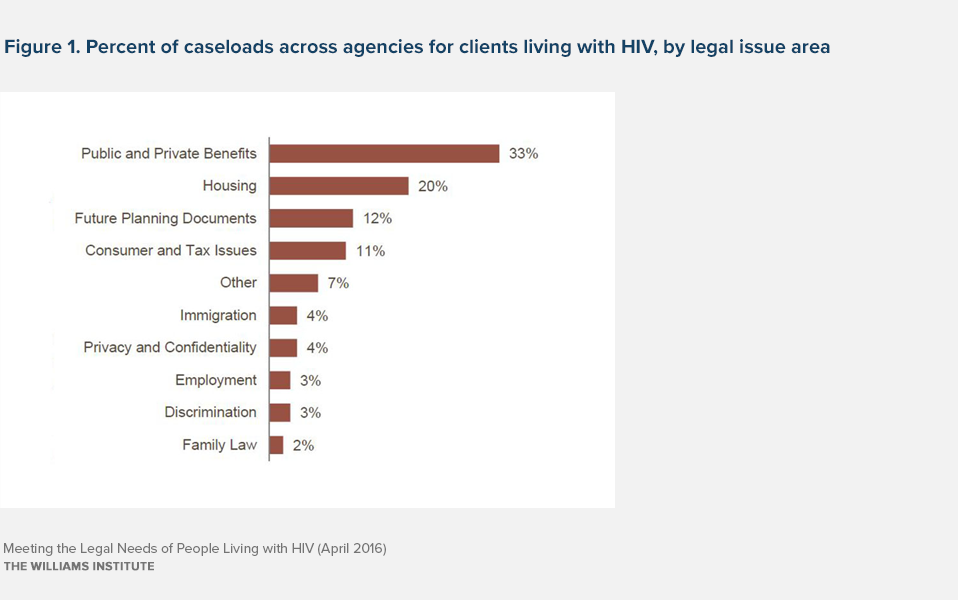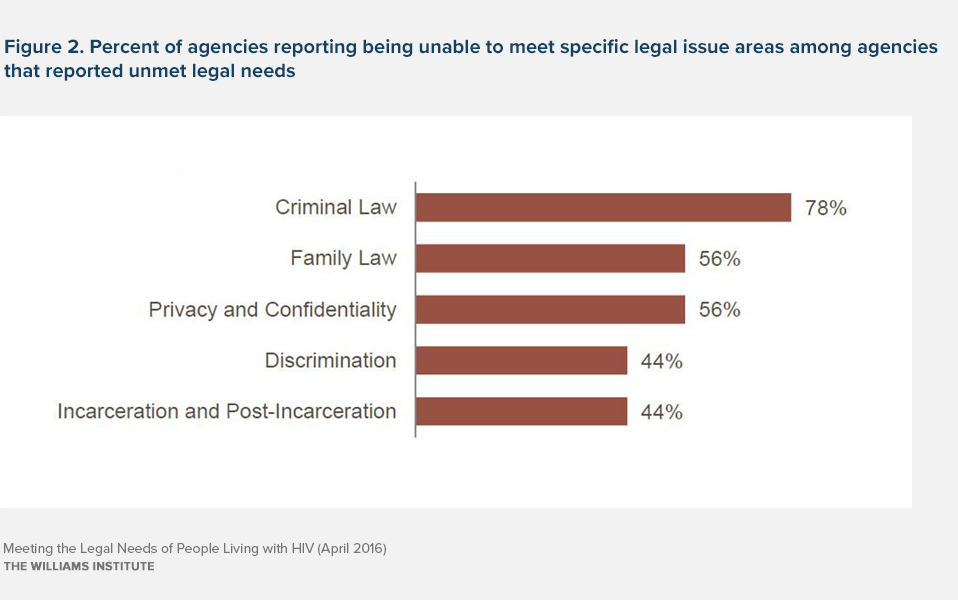Executive Summary
An estimated 1.2 million people in the United States are living with HIV. Legal services providers can often address the impact of destabilizing forces that may create barriers to accessing and maintaining regular health care for people living with HIV (“PLWH”). In this study, we sought to understand more broadly the efforts of legal service organizations dedicated to serving PLWH, the impact of their work, and emerging trends observed by such organizations. In 2013, the Williams Institute sought access to archival client services data from legal services providers dedicated to serving PLWH in the ten Metropolitan Statistical Areas with the largest number of HIV-positive residents. Fourteen agencies were surveyed.
Key Findings
- Eight agencies reported their total number of cases serving PLWH. Together, they fielded 22,682 cases from 2010 to 2012.
- Almost all of the agencies reported that the majority of their clients were people of color.
- Agencies reported that the percent of clients living with HIV identifying as Black ranged from 15% to 80% with a median of 43%, and the percentage identifying as Latino/a ranged from .02%to 46% with a median of 18%. The median numbers largely reflected the racial/ethnic breakdown of individuals recently diagnosed with HIV in the United States.
- The median figures for clients’ gender identity were similar to the gender representation of individuals recently diagnosed with HIV in the United States.
- Among those who reported specifically on their HIV-positive clientele, the median percentage of clients identified as cisgender men was 73%, cisgender women was 26%, and transgender was 2%. By comparison, 80% of those newly diagnosed with HIV in 2010 were men, and 20% were women (no figures are available
to separate out transgender people).
- Among those who reported specifically on their HIV-positive clientele, the median percentage of clients identified as cisgender men was 73%, cisgender women was 26%, and transgender was 2%. By comparison, 80% of those newly diagnosed with HIV in 2010 were men, and 20% were women (no figures are available

